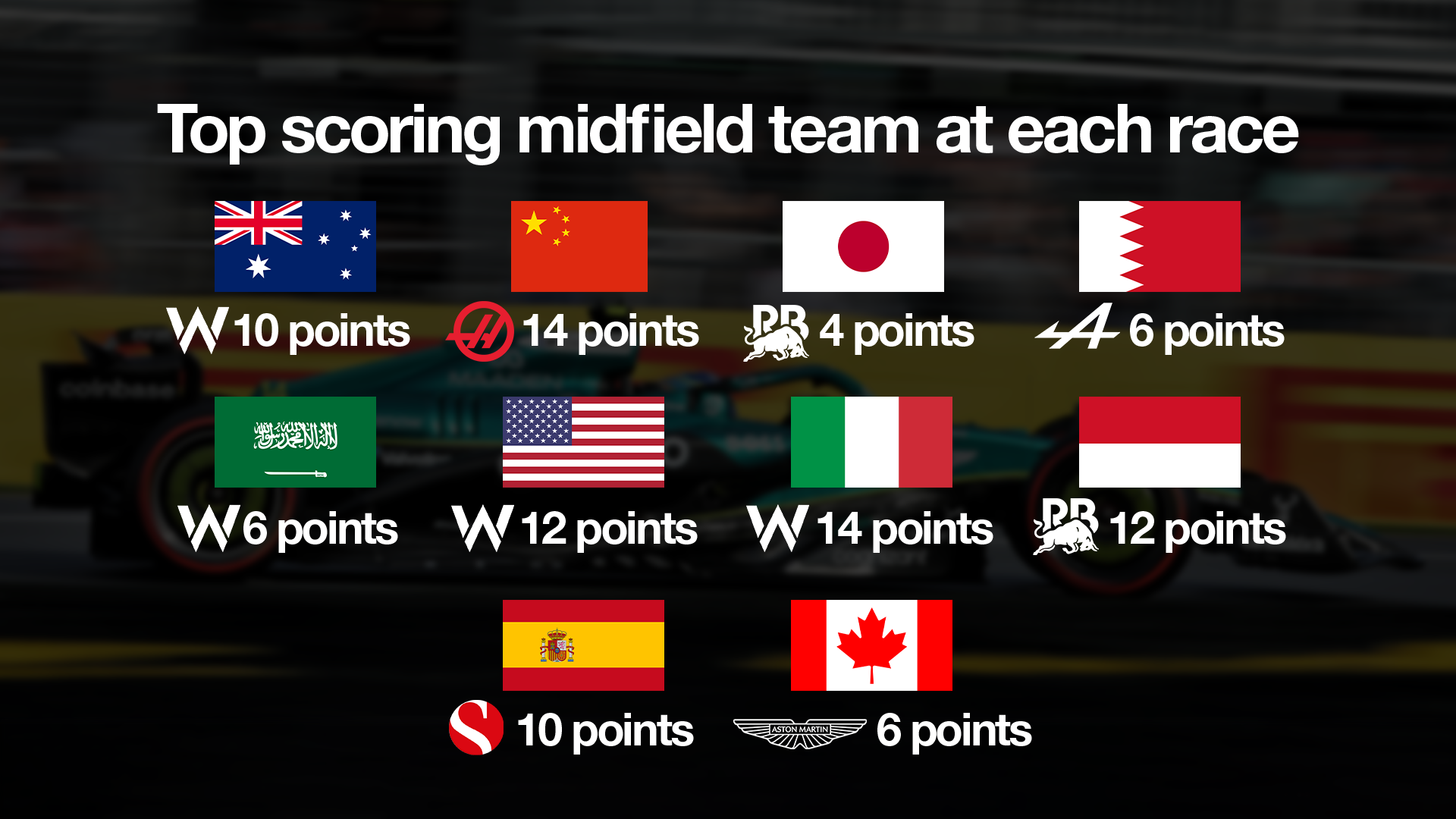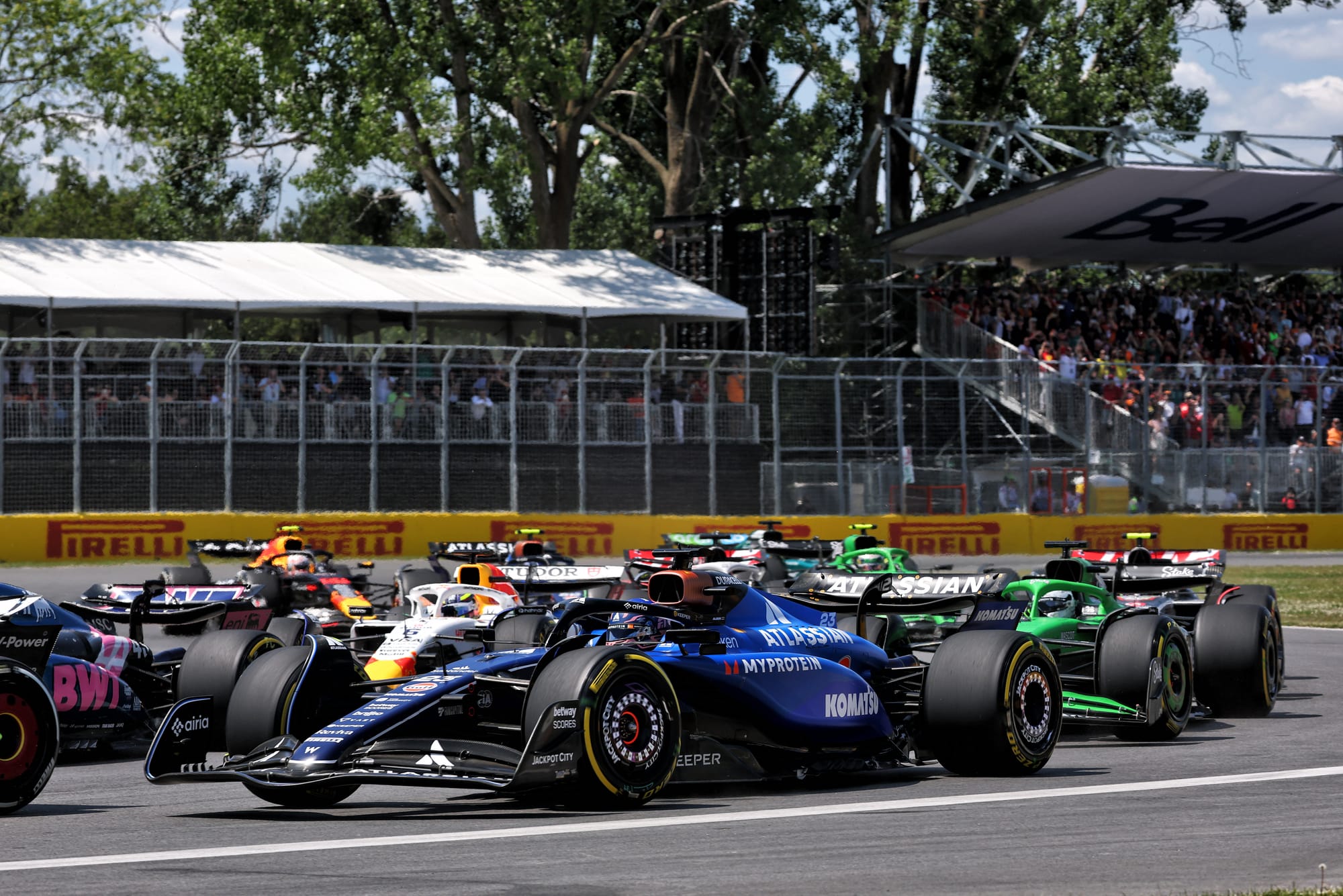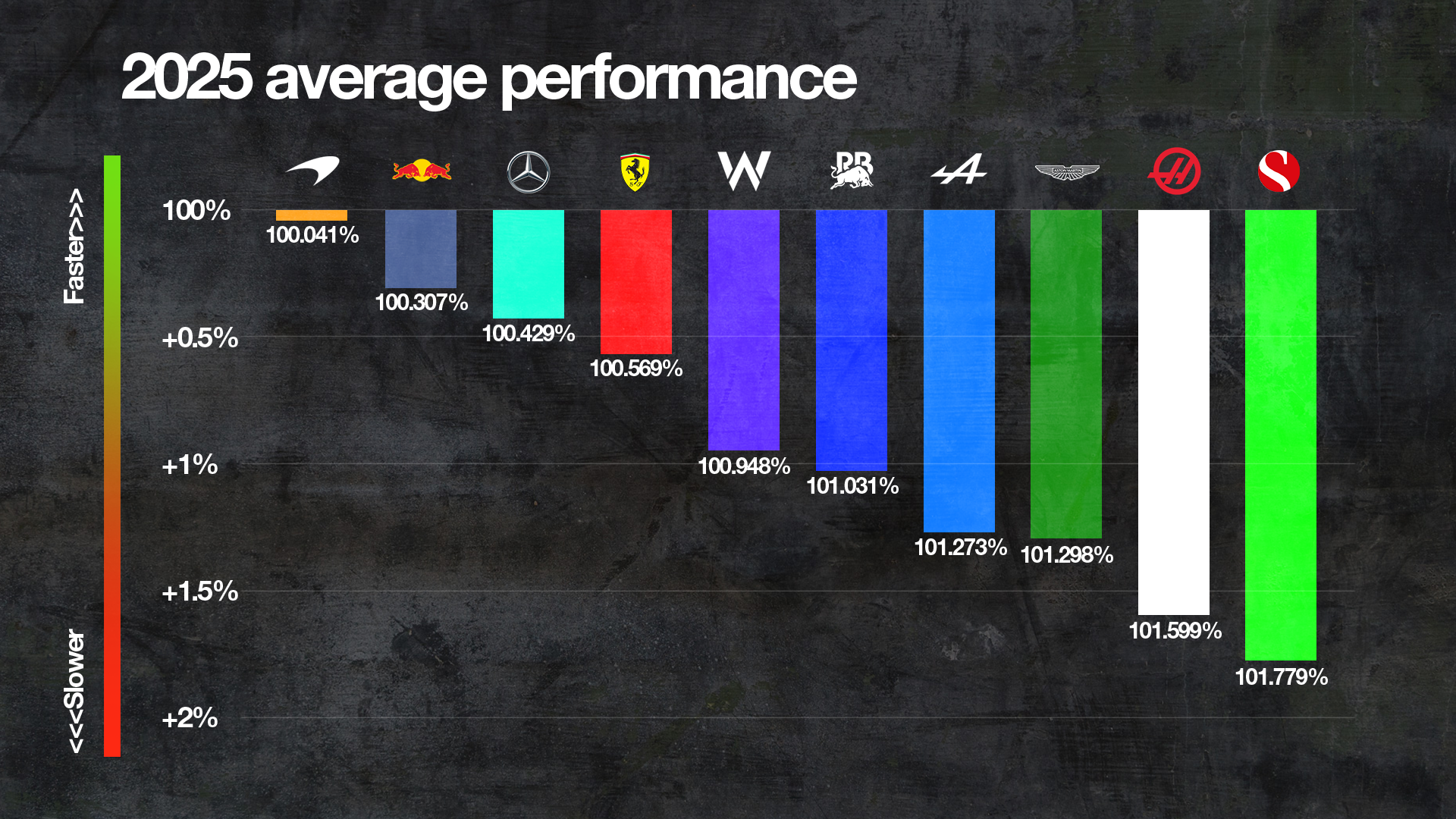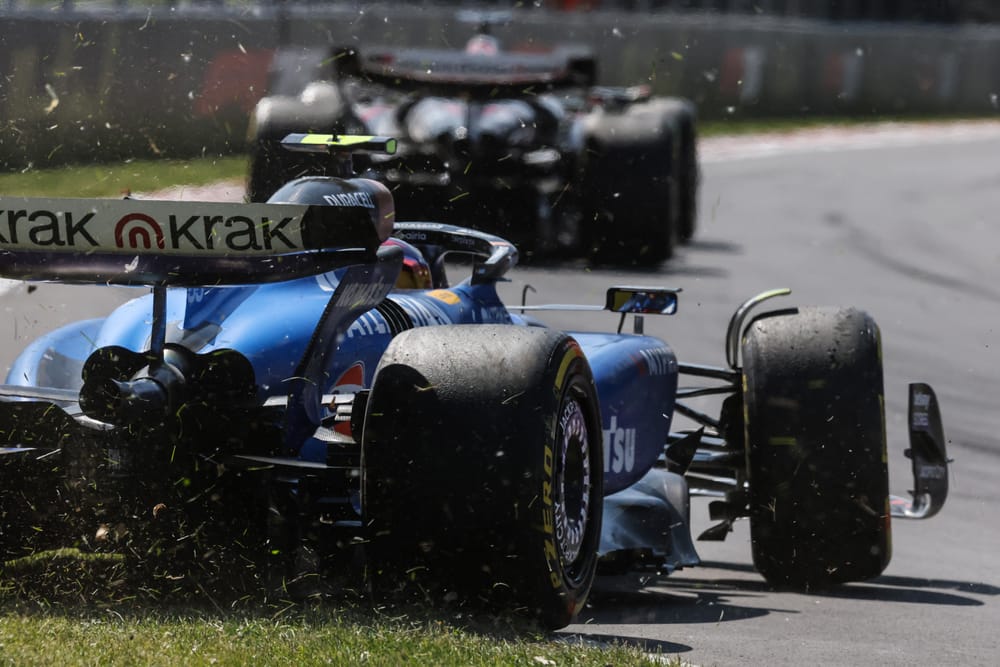When Williams beat at least one Ferrari in back-to-back Formula 1 races just a month ago, that overachievement was a great symbol of its progress and its status as the clear midfield benchmark.
In the three grands prix since then Williams has scored four points, the joint-lowest number of any team: equal with Alpine, less than early 2025 strugglers Aston Martin and Alpine, and less than Racing Bulls and Haas, its nearest challengers for fifth.
Points in the last three races
Racing Bulls: 18
Sauber: 14
Haas: 8
Aston Martin: 8
Alpine: 4
Williams: 4
It is a surprising mini-slump on paper, even though Williams had been stressing during its peak of the Miami and Imola weekends that it did not expect to maintain its strong form indefinitely because of a big development choice.
Williams switched deliberately early to focusing on its 2026 car because of the all-new technical regulations coming into force this year, a strategy it knew could mean sacrificing better results - and a top-five constructors' championship finish - in 2025 because getting next year right means a good foundation for several seasons to follow.
So, is Williams already starting to suffer for that strategy? It is an easy assumption to make, especially as drivers Carlos Sainz and Alex Albon have watched direct rivals get some nice upgrades in the last few races.
Aston Martin's major Imola update has turned it from something of a no-hoper at times this year to having the fifth-fastest car over the last four events. A Sauber package immediately made it a point-scorer - in a big way - in Spain, then Nico Hulkenberg followed up that opportunistic fifth place with eighth in Canada. And even Alpine utilised a new floor to points-scoring effect at Barcelona.
"There's one thing that is very generic [across the last few races], which is the others are bringing upgrades and we haven't," said Sainz.
"So, one way or another, you're always going to find it tougher to get to the points if the others are upgrading themselves and you're not."
But there are caveats here. Because it is not as simple as 'Williams's car is getting less competitive, just like it expected'.
The midfield is definitely condensing further - something that somehow keeps happening no matter how close it gets - because the initial strugglers have raised the grid's basement level. And Williams was already vulnerable to that: see Bahrain in April, when different factors meant both of its cars underperformed and others stole in to beat it to the points.
So now, Williams has more rivals, more often. Which makes other variables a bigger factor - and as Sainz said, Williams has "had a different issue [on] different weekends" for three races now. It has opened the door and ultimately underachieved.
This is probably a bigger factor than others upgrading their cars and Williams not. Because the FW47 has been quick enough to score more points than it has in the last three races. It is not as though it has suddenly plummeted from midfield leader to having a lower-midfield car on pure performance.

In Monaco, for example, both cars were comfortably in the top 10 in almost every session until tyre preparation went strangely awry in what Albon called "maybe the most frustrating qualifying of the season so far". It left Williams with that awkwardly "manipulated" Sunday salvage job to leave with a ninth and a 10th on a weekend it could, potentially, have had something akin to Racing Bulls's result (sixth and eighth).
Spain exposed a weakness that still lingers in the car in longer corners, but despite that Albon put himself in contention for points - and was really encouraged by this - and only had that hope dashed by front wing damage at the start. Maybe that was only a meagre one- or two-point return that went missing, but it went missing nonetheless.
And in Canada, Sainz salvaged a point from near the back after being terribly impeded and knocked out of qualifying in Q1, while Albon's race was compromised by a poor first lap and then ended anyway by an engine overheating problem (which is linked to an underlying cooling limitation Williams is trying to get on top of). That weekend started with the cars in the top three in FP1 and while that was never likely to be sustained a double-points finish should have been possible.
"Barcelona was always going to be tough, Canada we didn't do a good job in executing the weekend - and the same could've been said about Monaco, even if Monaco we saved the day with a bit of a random strategy there at the end," said Sainz.
"But in general, the feeling this year is that, especially on my side of the garage, despite the good pace and the good adaptation process to the team, what I'm actually finding more challenging is to get the weekend execution right.
"Being back in the midfield and being aware of how much every detail counts when it comes to race weekend execution in Q1, Q2 and strategy.
"We want to make a step on that, to start getting the points that I think our quali pace and our race pace deserves. Which is recently what we haven't been able to do."
Ultimately, change certain variables from those three weekends - tyre preparation, track characteristics, qualifying misfortune, first-lap mishaps and technical troubles - and Williams's results could easily swing from four points in three races to three or four times that total.
The fight for fifth

5th: Williams - 55
6th: Haas - 28
7th: Racing Bulls - 28
8th: Aston Martin - 22
9th: Sauber - 20
10th: Alpine - 11
Its championship position is still very strong, and obviously in its power to consolidate. But as Haas learned last year, when Alpine vaulted into contention with a more competitive car and then a single, mega weekend (its shock double podium in the wet in Brazil), ruling out anybody in the midfield is foolish. Especially this early.
Williams can only control its own performance, which is why Sainz emphasised the need for better execution. It has essentially gone from overachieving at its best - and even then, it could have potentially done even fractionally better - to underachieving at its worst.

That could be a good thing, as it means a quick rebound is entirely realistic. And it means its big development choice for 2025 has not necessarily bitten the team already.
However, it could still be costly if that downside is still to come and Williams has wasted too many chances to build an unassailable buffer as best of the rest.



